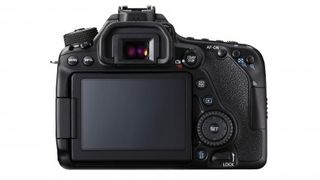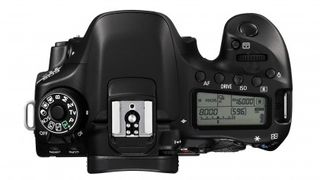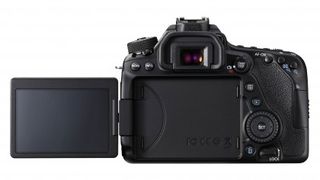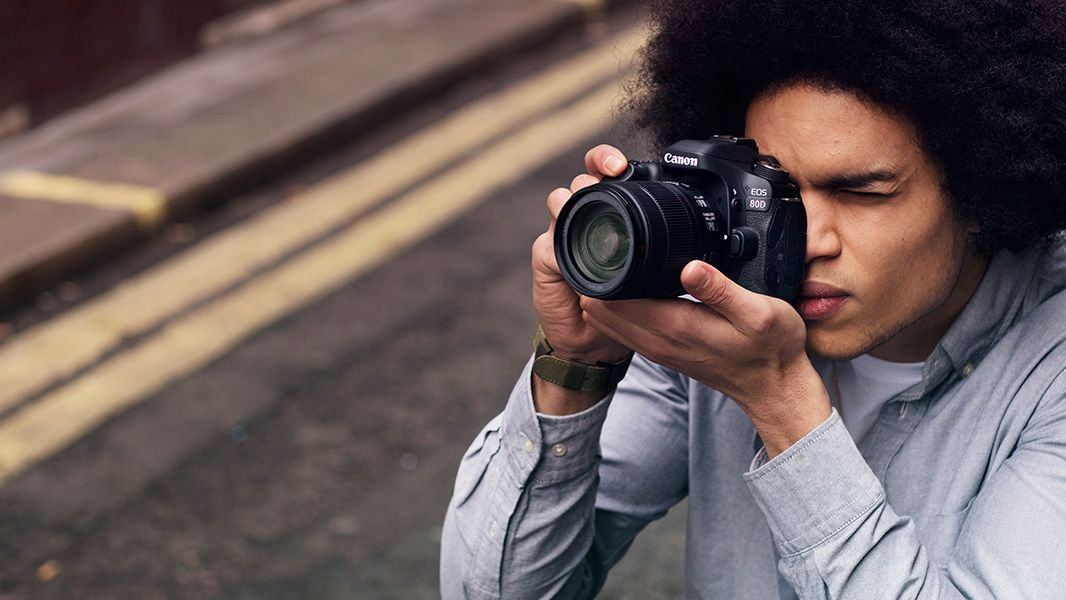Why you can trust TechRadar
Although the EOS 80D is not quite as big as the 5D Mark III, when my index finger is poised over the shutter release there's enough room to accommodate the rest of the fingers of my right hand on the 80D's grip. Those with large hands, however, may find it more comfortable to slip their little finger beneath the grip.
The majority of the button controls are located on the right side of the camera, either on the back or the top-plate and are within easy reach as you hold the camera for use.
Some, like the AF, Drive and Metering buttons, are designed for use in conjunction with the Main Dial or Quick Control Dial while you look at the secondary LCD screen on the camera's top-plate rather than through the viewfinder.
It's a tried and tested approach that works well, but many will find the touch control afforded by the main screen on the back of the camera more intuitive to use.


Unlike some other manufacturers, Canon gives touch-control over both the main and Quick Menus and it can really speed up use. It also makes light work of scrolling through images and setting AF point or tripping the shutter in Live View mode.
The Quick Menu is very useful, providing a speedy route to some of the most commonly used features. It would be nice, however, if this was as customisable as it is on the 1DX Mark II so that it only contained those features that you use on a frequent basis.
Some photographers, for example, may never need (or want) to change the file format that they shoot. It would be even better if there were two customisable Quick Menus, one for stills and one for video.
As with Canon's other touch-enabled SLRs, the touch-control works very well. Menu items can be selected by a tap and options chosen either by a second tap or by using the navigation keys, the mini-joystick or a control dial, whichever you prefer.

The 3-inch 1,040,000-dot Clear View II screen on the back on the 80D provides a delightfully detailed, crisp view. When the target area is magnified on-screen in Live View mode it makes focusing manually much easier than when using the viewfinder. Its vari-angle hinge also makes the screen very useful when shooting from awkward angles in either landscape or portrait orientation, saving you from crawling around on the ground to get a worm's eye view. It's at these times that the ability to set AF point and trip the shutter with a tap on the screen comes into its own.
In bright sunlight, however, it's necessary to turn the screen's brightness up to the maximum setting to give a clear view. I found it useful to assign the LCD Brightness control to one of the six customisable My Menu screens so I could access it quickly if necessary. Ideally I would probably assign it to the Quick Menu if that were possible.
Although the 80D's screen is very good, the viewfinder is still the more natural option for most photographers to use when shooting stills, especially if the subject is moving. This also provides a nice bright view and, unlike the 70D's viewfinder that only covers 98% of the lens field of view, it covers 100%. That means there are fewer surprises around the edge of the frame when you review your shots.
It's possible to select Creative Filter mode via the 80D's mode dial. When this is selected one of 10 filter effects can be applied to JPEG images as they are shot. If you're shooting raw files or raw and JPEG files, the camera switches automatically to shooting just JPEGs. Although it's possible to use the Creative Filters when composing images in the viewfinder, their impact can only be previewed on the main screen in Live View mode.
Canon increased the number of Custom Mode settings accessible via the mode dial from one on the 70D to two on the 80D. This means that you can be shooting with one collection of settings and quickly switch to two alternatives. For instance, you could set one Custom mode to shutter priority with a shutter speed of 1/500sec, auto sensitivity, Natural Picture Style, continuous AF and Continuous Shooting so that if you happen to see some wildlife when you're out shooting landscapes, you can change all the settings with just a turn of the mode dial.
It's also possible to assign up to six menu items to each of up to six My Menu tabs. This makes it easier to access some of the more buried functions such as Mirror Lock-up. I found it useful to assign key still features to one tab and video features to another.
In addition, Custom Function III 4 enables you to customise up to nine controls (buttons and dials) to access certain features. I find it helpful to set the navigation control to give a direct means of selecting AF point for instance.

